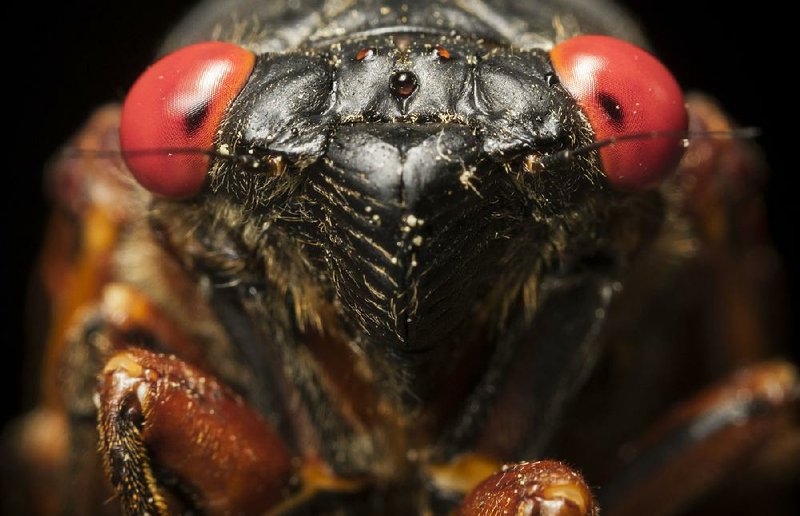Dear Otus,
I reacted with horror to the article in last Saturday's paper concerning a new threat to Arkansas. I refer, of course, to the kudzu bug.
Could it be that our beloved state vine, which graces so many of our highways and byways, is in peril?
Say it ain't so!
Richard Henry,
Rogers
Dear Richard,
It was wholly a pleasure to hear from you and to have the opportunity to address this growing threat to our beloved way of life in The Natural State.
Horror was the correct response. The situation is surely horrific, if not appalling or even execrable.
OK, maybe not execrable. I just like saying that word. Almost as much as saying "off-putting," "gesticulate" and "spork."
Unfortunately, not everything is "natural" in the state. I blame Obamacare. Maybe Planned Parenthood, illegal immigrants, gun control and Hillary, as well. But certainly the Obamacare diversion of critical research funds has directly resulted in the increasing bane of the kudzu bug.
And quite the scourge it is. The binomial scientific name for the kudzu bug (a relative of the brown marmorated stink bug) is Megacopta cribraria, which comes from the Greek and means "giant-headed bed singer" because of the eerie, high-pitched aria it "sings" when in its spring colonies of millions of bugs.
The insects make the noise by rapidly rubbing their labrum and maxillae. It is the stuff of nightmares.
Depending on where you live, M. cribraria is also called the bean plataspid, kudzu beetle, globular stink bug, lablab bug, sewer beetle, devil's armpit and humbug.
M. cribraria is a shield bug. That is, it has hardened elytra and sucking mouth parts, a well-developed scutellum and stink glands.
Growing up to 6 inches and resembling a cicada on steroids, the kudzu bug is normally not considered harmful to humans, although its stench can be overpowering, especially on sultry summer nights. When threatened, touched, squashed or poked, the kudzu bug emits a foul-smelling pheromone that also acts as a congregation pheromone -- thousands of bugs will swarm to the stink.
Native to India and China, North American kudzu bugs were first discovered near Atlanta in 2009. Genetic fingerprinting reveals the bugs arrived from Tokyo's Narita International Airport aboard Delta Air Lines.
Initially, Southerners thought the bug sort of cute and several high school football teams changed their mascots. The lone instance in Arkansas is the Camden Fairview Fighting Kudzu Bugs -- before 2011, the (rather mundane) Cardinals.
However, since 2009, kudzu bugs have spread rapidly across the South, devastating the beloved decorative perennial vine that was introduced in the 1930s and '40s as erosion control and animal forage.
Although native to Japan, Pueraria lobata (kudzu or Japanese arrowroot) was designated the state vine of Arkansas on Jan. 5, 1975, by acting Gov. Joe Purcell during his week-long administration between David Pryor (who had stepped down early after being elected U.S. senator) and Bill Clinton.
It was Purcell's sole legacy and nobody has stepped up with a better vine, although there is a strong Ipomoea pandurata constituency in the state.
Would the loss of the state's kudzu cover be all that bad? You bet. The kudzu bug's second most favorite food is soybeans. The bugs are expected to spread statewide from Chicot, Ashley, Drew and Desha counties next year by hopping rides on tractor-trailers.
Although short on funds thanks to the monetary diversion to Obamacare, the University of Arkansas Cooperative Extension Service has a bold, two-front plan to combat the bugs and save the state's soybeans.
First of all, free kudzu seeds will be provided to anyone who asks so that there will be enough kudzu to feed the kudzu bugs and keep them from our precious soybeans.
Secondly, UA entomologists have made arrangements to inundate the state next spring with the kudzu bug's natural enemies, the tachinid fly and a tiny black parasitoid wasp called Tenebris vesparum.
Until next time, Kalaka says do your part and plant kudzu. Order online at uaex.edu. Click on the Environment & Nature link.
Disclaimer
Fayetteville-born Otus the Head Cat's award-winning column of
Z humorous fabrication X
appears every Saturday. Email:
mstorey@arkansasonline.com
HomeStyle on 10/10/2015
